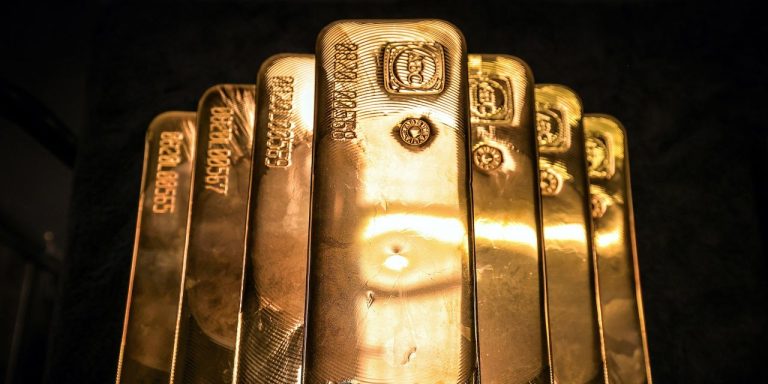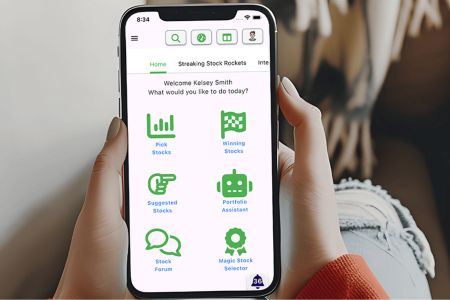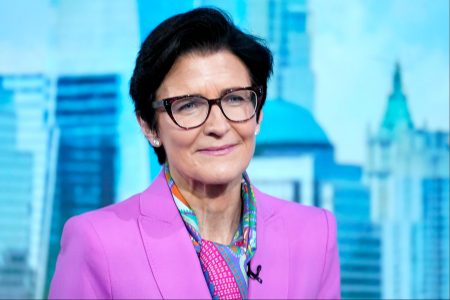Gold futures settled higher Friday for the first time in 10 trading sessions, putting an end to the longest daily losing streak for the precious metal in more than six years.
Price action
-
Gold for December delivery
GC00,
+0.19% GCZ23,
+0.19%
edged up by $1.30, or nearly 0.1%, to settle at $1,916.50 an ounce on Comex. After posting losses in each of the previous nine sessions, prices based on the most-active contract tallied a nearly 1.6 % weekly fall, according to Dow Jones Market Data. -
September silver
SIU23,
+0.65%
added 2 cents or nearly 0.1%, at $22.73 an ounce, ending less than 0.1% lower for the week. -
October platinum
PLV23,
+0.21%
gained $19.40, or 2.2%, to settle at $915 an ounce, for a weekly rise of less than 0.1%. September palladium
PAU23,
+0.24%
rose $39.50, or 3.2%, to $1,260 an ounce, ending almost 3.8% lower for the week. -
September copper
HGU23,
+0.27%
edged up by a penny, or 0.4%, to $3.71 a pound, posting a weekly loss of nearly 0.4%.
Market drivers
Gold’s nine-day drop through Thursday, its longest losing streak since March 2017, came as Treasury yields have broke out to the upside, with the 10-year yield
BX:TMUBMUSD10Y
rising above 4.25% to a 15-year high. The dollar has rallied alongside, with the ICE U.S. Dollar Index
DXY
trading up 0.5% this week and around 1.4% so far in August.
For gold, “bears are clearly in the building and could dominate the scene further given the right fundamentals forces,” Lukman Otunuga, manager of market analysis at FXTM, told MarketWatch.
Rising yields and a stronger dollar, driven by strong U.S. economic data that has reinforced expectations the Federal Reserve will keep rates “higher for longer,” are getting much of the blame for gold’s slide. Rising yields raise the opportunity cost of holding a nonyielding asset like gold, while a stronger dollar can be a negative for commodities priced in the unit by making them more expensive to users of other currencies.
“The recent renewed rise in U.S. yields dampens investor interest, among both the more short-term-oriented speculative financial investors and the ETF investors,” Barbara Lambrecht, commodity analyst at Commerzbank, said in a Friday note.
“In this environment, the physical demand in Asia can hardly do anything to help, and China’s gold imports are unlikely to move prices,” she said.
Attention will instead focus on next week’s U.S. monetary policy symposium in Jackson Hole, Wyoming, where Federal Reserve Chair Jerome Powell is expected to speak.
“This is a major event where central bankers and financial heavyweights come together to tackle pressing economic issues that impact the entire world,” said Otunuga. “When considering how such a gathering could provide investors with critical insights into the Fed’s stance on rates, gold may be in for a rollercoaster ride.”
“When considering how the Jackson Hole, Wy. monetary policy symposium “could provide investors with critical insights into the Fed’s stance on rates, gold may be in for a rollercoaster ride.” ”
If Powell is seen indicating another interest rate increase is likely, gold could fall “somewhat further still,” Commerzbank’s Lambrecht said, though Commerzbank expects that Powell won’t commit to a move.
Commerzbank contends U.S. policy interest rates have already peaked, which will set the stage for a recovery by gold “as soon as there are also clear signs that the market has acknowledged this,” she said.
Read the full article here









